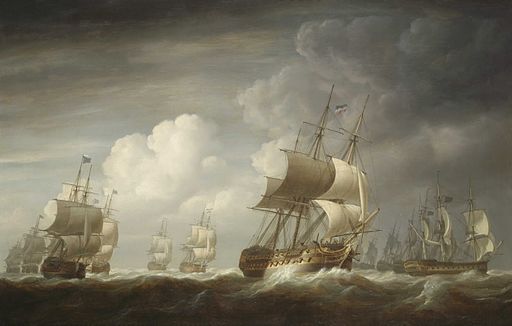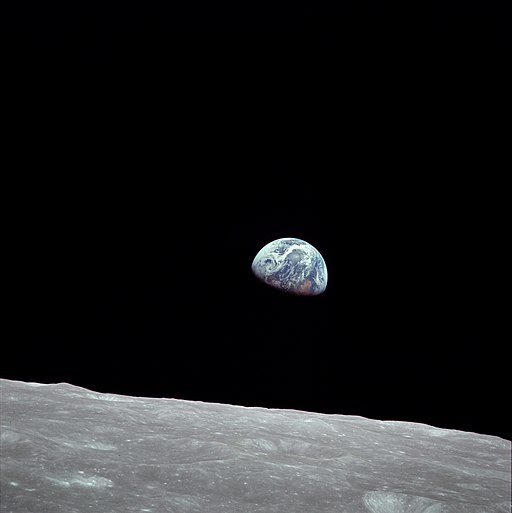The Web
Elon Musk’s SpaceX has sent hundreds of internet communications satellites into low Earth orbit, and has plans to launch thousands more such satellites in the near future. Other companies, among them Jeff Bezos’s Amazon, have similar plans. Within the span of several years, the number of satellites launched into orbit could double from the amount that have been launched since the beginning of the Space Age in 1957. The clutter could interfere with astronomers’ observations and measurements, and even with casual enjoyment of the night sky by lay people.

“A Fleet of East Indiamen at Sea”, an 1803 painting by Nicholas Pocock (1740-1821).
Why should SpaceX, for instance, invest hundreds of billions of dollars in the infrastructure needed to establish colonies in space with the potential for enormous profitability in the long run without being assured tens of billions of dollars in government contracts in the short term and the perpetual cash cow of providing internet service to billions of people every day? Look up in the night sky for answers and soon enough you’re likely to see the winking reflections off tens of thousands of satellites, glinting like dew along the strands of a spider’s web.
— Techly 
The last scene of the 1982 meditative documentary Koyaanisqatsi, directed by Godfrey Reggio, with cinematography by Ron Fricke and music by Philip Glass.

